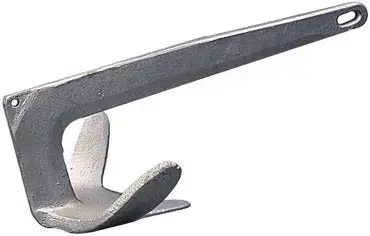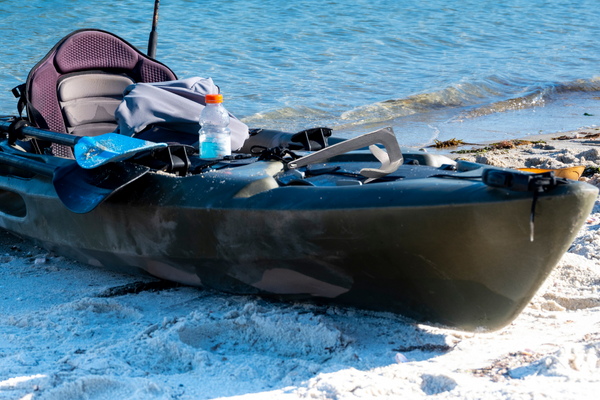Kayak Anchor Systems (For Advanced Rigging)
UPDATED 17 MAY 2023
by Robert Ceran
Anchoring a kayak is the best way to stay in a fishing hot spot. The problem is that using an anchor can sometimes be very dangerous.
Many people have learned the hard way that it’s not enough to tie an anchor to the side of their kayak.
So kayak fishermen have devised a way to anchor that works better and is safer. This system uses a shuttle system similar to the pulley clotheslines you see between buildings.

With this system, you can put the anchor in the middle of the kayak, making it less likely to flip over.
It also lets you quickly disconnect if something goes wrong while fishing, or you need to fight a fish.
Types of kayak anchors
While there are different kayak anchors, the Bruce, folding claw, and stake-out poles are the most common ones used for kayaking.
Of these three options, the 1.5-pound Bruce and the 3-pound claw are the two most popular anchors for kayaking.
Both should be set up for quick release and with floats that will allow you to retrieve them if you ever need to release them.

The claw anchor works well for most situations and can be folded up for storage. It will work in almost any situation as long as the current is moderate to slow and works best in freshwater settings.
The Bruce or Manta anchor is made for muddy and sandy bottoms, and this is my personal favorite.
When there isn’t much water, the stake-out pole is used (up to 2 feet). It consists of a pole attached to the bottom of the kayak.
The stake-out pole is the most straightforward anchor to use, and it’s also good for keeping the kayak in place when you want to wade.
Sit-on-top (SOT) kayaks have holes that can be used with stake-out poles. Just push them down through the hole in the bottom and into the bottom.
Setting up your anchor
All your anchors should be rigged so that they will turn around if they get stuck. For example, the claw and Bruce anchors have holes in their bottom that let you set them up this way.
Attach the rope to the bottom of the anchor with a small shackle, and then tie the rope to the end of the anchor’s shaft with a small cable tie.

Even a lot of use won’t break the tie. However, if the anchor gets stuck, give it a good pull. The knot will break, and the anchor will change direction.
You should also put a float on the other end of the anchor line. This will let you drop the anchor if you need to. Then, you can go back and get it whenever you want.
If things get bad (currents, waves, etc.), you should let go of the anchor and return when things are better. You should never anchor when there is a strong current or a big wave.
Putting the shuttle system in place
Step 1
Choose which side to put the shuttle on. I like to put it on the side opposite where I cast.
Put the Harken pulleys on the kayak’s front and back. Get them as close to the end as possible without affecting other parts of the ship, like the rudder.
You might need to use pad eyes and attach them to the kayak with rivets.
On the Wilderness Systems Tarpons, you can attach the pulleys to the carrying handles on both ends of the kayak.
Use the bungee to connect the pulleys to the pad eyes or the handles.
Step 2
Feed Niteline or 550 cord through the pulleys and make a loop at both ends of the line.
Please ensure they are tight enough that the bungee can stretch and hold them in place. Use a stainless steel carabiner to connect these two loops.
Step 3
Clean up any frayed ends with heat or shrink tubing.
Step 4
Attach a small boat cleat to the middle of your kayak on the same side as the shuttle system.
Using the kayak anchor system
Both anchors and the stake-out pole will work with this system. Cast out the anchor as usual, and hook the rope to the carabiner when it stays in place.
Check to see if the rope can go through the ring. Then, you can move the carabiner to the front or back of the kayak by using the pulleys.
Connect the rope to the cleat when it gets there. The kayak will move so that it is parallel to the anchor. If you need to, let out more bungee rope.
To get the anchor back, take the line off the cleat and pull it in while the carabiner is at the end. The boat’s weight will be used to pull in the anchor.
When the anchor reaches the surface, pull it to the middle and take the line out of the carabiner. If something goes wrong, drop the anchor and come back for it later.
Final remarks
I hope this article has been helpful and will help you find the right anchor system for kayak fishing.
